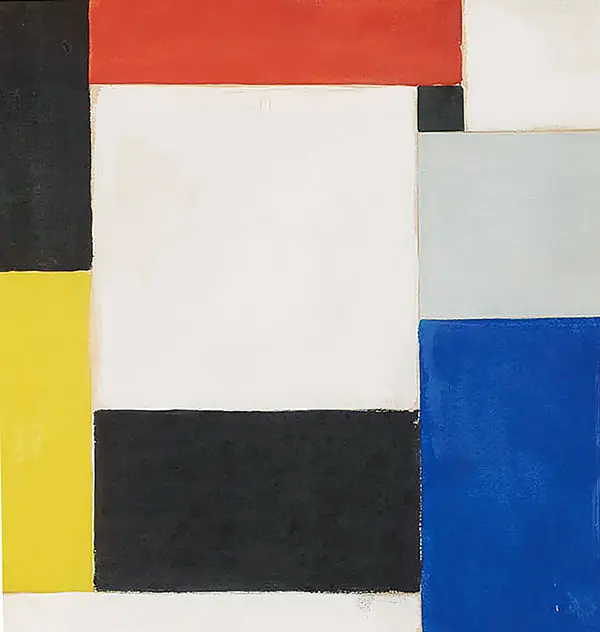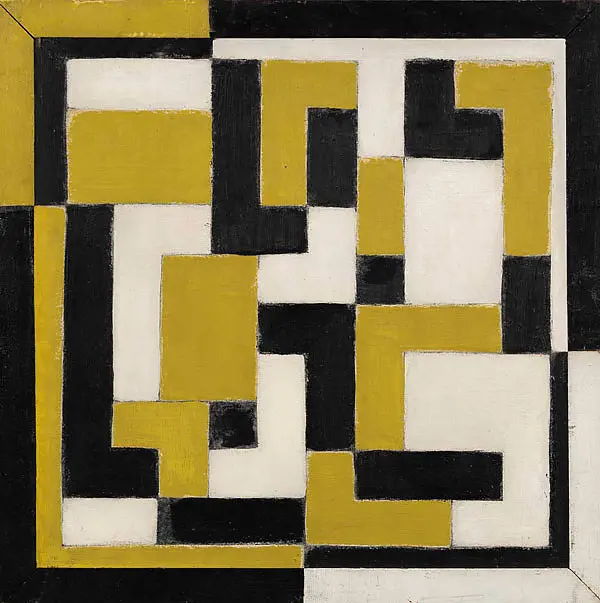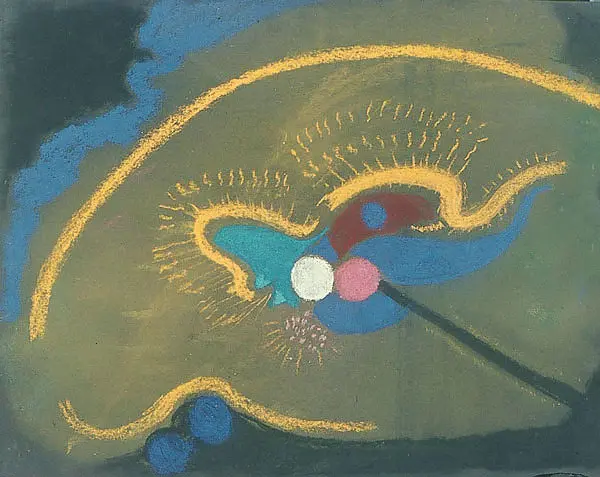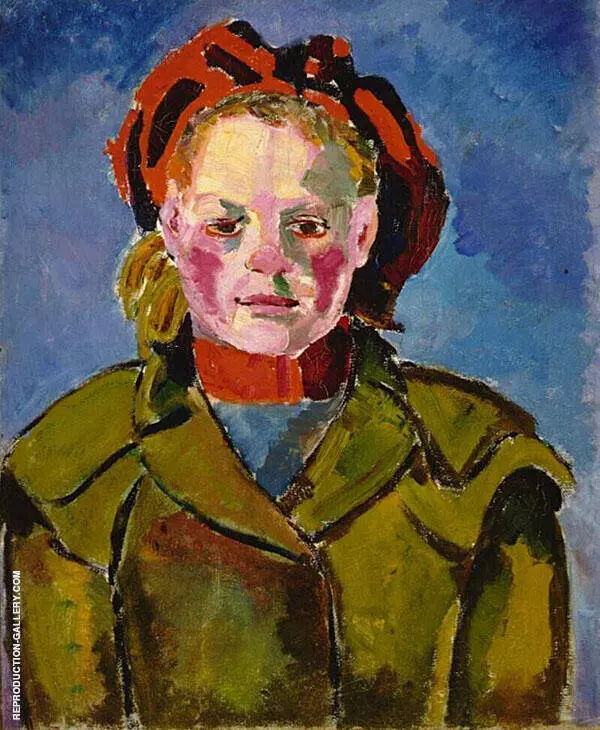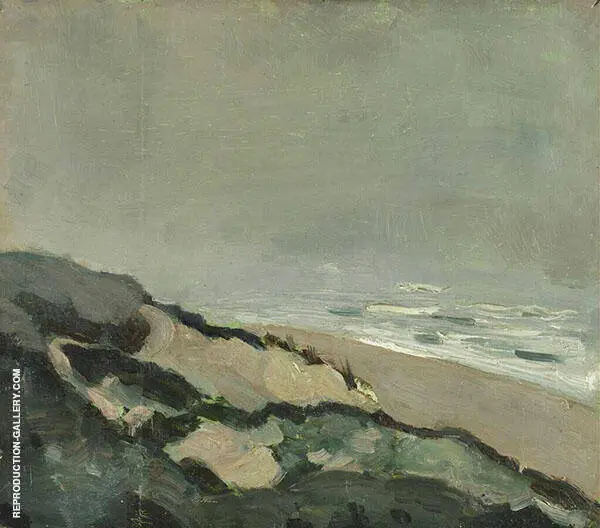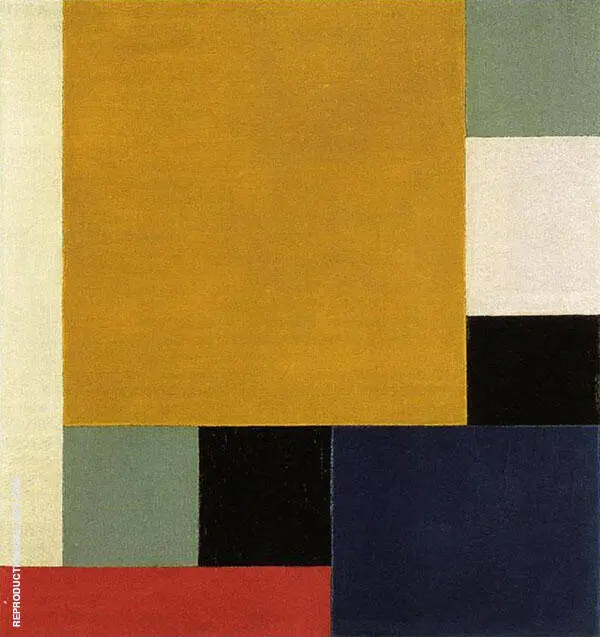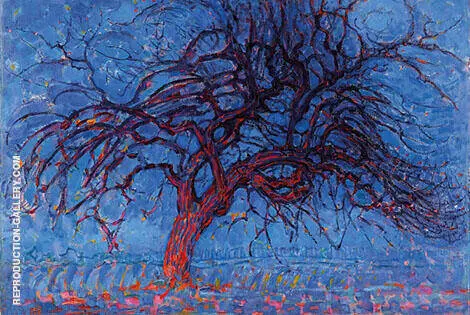De Stijl Art Oil Painting Reproductions
Find De Stijl Art oil painting replicas by De Stijl Artists
De Stijl Art: A Brief Introduction
De Stijl art refers to a small group of Dutch artists working in the early 20th century. They focused on pure geometry and colorful paintings with a profoundly abstract art style.
The De Stijl art movement was highly influential but short-lived. Commencing in 1917, it lasted until the mid-1930s. Here, we briefly introduce this beautiful and highly intellectual style of art. Discover its leading proponents and critical characteristics of the movement.
What is De Stijl art?
De Stijl was originally an artistic and academic publication. Founded in 1917 by Piet Mondrian and Theo van Doesburg, it became a vehicle for their views on artistic production.
Piet Mondrian defined his aims in a series of revolutionary essays published in the first years of the Magazine. His writing includes grand, utopian views of society and a rational view of new universal art. Van Doesburg further believed the style could influence all cultures.
With this in mind, the pair’s guiding motto was “The object of nature is man; the object of man is style.” They hoped this fresh style could transform all art forms: this incorporated fine art oil paintings, urban planning, poetry, music, and typography.
Mondrian’s writings also introduced the term “Neo-Plasticism.” A new word referred to Mondrian’s unique form of abstract painting. Like the De Stijl art approach, it utilized only vertical and horizontal lines combined with primary colors. Translated as “new art,” it played a fundamental role in the De Stijl movement’s aesthetics and goals.
When did De Stijl art end?
After its initial phase from 1916 to 1921, the Proun style of Russian artists such as El Lissitzky influenced the De Stijl art movement. After this point, the third De Stijl phase lasted until 1932. Unfortunately, it ended with the death of its co-founder, Theo van Doesburg.
Piet Mondrian withdrew from the De Stijl art group in 1923. Prompted by Van Doesburg’s inclusion of diagonal lines in his artworks, he felt the movement’s stylistic objectives were failing. Calling his approach “Elementarism,” Van Doesburg continued the De Stijl publication until 1931.
Indeed, Van Doesburg’s diagonal style is evident in works such as Contra Composition XX and Simultaneous Counter-Composition V. He also produced several strictly De Stijl artworks, such as Contra Composition X, which correspond with famous Piet Mondrian paintings Composition Red Yellow Blue and Tableau II.
After the significant friction between the group’s founders, Mondrian paintings continued the De Stijl style. Later, Piet Mondrian's paintings, such as Composition 1939 and Broadway Boogie-Woogie, resumed his highly distinctive approach.
Who are the foremost De Stijl artists?
As well as Piet Mondrian and Theo van Doesburg, other De Stijl artists included Georges Vantongerloo, Vordemberge-Gildewart, and Bart van der Leck. As well as painters, architects such as JJP Oud and Gerrit Rietveld also contributed to the movement. De Stijl architecture similarly focused on simplified geometric designs and integrating interior and exterior aspects.
In 1918, the group produced an eight-page manifesto. Signed by Mondrian, Vantongerloo, Van Doesburg, Vilmos Huzar, Robert Van’t Hoff, Jan Wils, and Anthony Kok, it bound the men together. They focused exclusively on compositions using only basic rectangular blocks, lines, and primary colors.
Despite these strict rules, this group of artists, sculptors, and architects worked in various mediums and styles. They all renounced naturalistic representation, however. Instead, they favored a stripped-back formal approach.
Like movements such as Dada, De Stijl responded to the horror and devastation of World War I. However, De Stijl artists sought to build artistic and societal harmony. They believed this provided a blueprint for restoring stability and order to everyday life.
What are the characteristics of the De Stijl Art Movement?
De Stijl means “the style” in Dutch. Its primary characteristics are simplicity and abstraction. Writing about his painting and the Neoplasticism style, Mondrian characterized his art as a “pure representation of the human mind.” He argued that this should appear in an aesthetically purified form. By this, he meant pure abstraction.
Piet Mondrian believed art could not accept natural or concrete representation. Instead, it needed to ignore the particulars of appearance completely.
On the contrary, De Stijl and Neo-Plasticist art focus on abstracting form and color with straight lines and clearly defined primary tones. It was an ideal art form, emphasizing the essential elements of painting in its purest form.
The mathematician Dr. M.H.J. Schoenmaekers wrote that “yellow radiates,” whereas “blue recedes and red floats.” The resulting equilibrium resulted in pure, balanced compositions with three carefully considered primary colors of blue, yellow, and red.
What made the De Stijl art movement famous?
De Stijl art profoundly impacted both Abstract Art and modern architecture. Its focus on abstraction and simplicity was shocking and persistent, and it quickly rose to prominence.
Piet Mondrian made the movement famous, although Theo van Doesburg’s artworks also defined the approach. Intriguingly, early Piet Mondrian art didn’t conform to the strict De Stijl style.
Indeed, Mondrian paintings such as Church near Domburg and Windmill in Sunlight are highly figurative with recognizable forms. His paintings progress through levels of abstraction, as evidenced in oil paintings like Apple Tree in Flower. Mondrian's art culminated in famous De Stijl paintings such as Composition with Black, Red, Gray, Yellow, and Blue.
Other iconic De Stijl oil paintings include Theo van Doesburg's Variation on Composition XIII and Composition 1924.
As well as their unique approach, De Stijl art responded to styles such as Cubism and Suprematism. This enhanced the visibility of the movement by aligning with broader avant-garde trends. Cubism’s focus on deconstructing visual clues with straight lines and flat geometric planes of color was particularly influential.
De Stijl oil painting reproductions
If you love colorful paintings and the modernity of De Stijl art movement paintings, enjoy discovering our unique collection of famous painting replicas.
Enjoy Piet Mondrian's famous paintings or Theo van Doesburg's artworks; you will find reproduction oil paintings to decorate your home or office. Fine art reproductions are handpainted and offered in many size options. We specialize in oversized wall art.
Cannot Find What You Are Looking For?
Reproduction Gallery Information
Customer Service
(Send Us A Message)
Tel: (302) 513 3464





